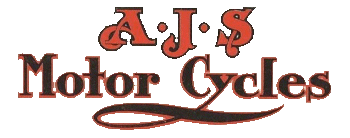

An article on the 1926 Tourist Trophy Races in Motor Sport Magazine reads:
For 1926 this firm have made no startling alterations in the design of their T.T. machines. The bicycles are to all intents and purposes standard G.R.7 (350 c.c.) and G.10 (500 c.c.) models as supplied to the public. The only deviations from standard concern the very large petrol tanks holding 3/ gallons of petrol and, in certain cases, non-standard brake controls are fitted to suit individual riders. The machines differ from those used last year in having the valve clearance adjustment on the tappet tube end of the overhead rockers, the tappets themselves do not protrude from the timing cover. Rocker return springs are again fitted. A larger exhaust port, with a finned pipe union, is also a new feature so far as the T.T. is concerned. A simple handlebar or pedal operated oil only is used for engine lubrication.
The riders include most of those who performed last year, supplemented by J. H. Stevens, who won the French Grand Prix last year, and C. E. Wise.
Excerpt from Reports on sports machines of 1926 (penned in 1949)
"A racing "G.10" 500-c.c. o.h.v. A.J.S., privately owned by a member of Motor Sport's staff, was featured next. High spots were the strengthened but 350 c.c.-size frame, ball and roller-bearing engine with duralumin rockers, close-ratio gearbox, both brakes foot-operated, a 3 1/2-gallon T.T. tank, twist grip and steering damper. As this A.J.S. was used for track racing, the figures for performance were rather out of the common rut. It was mentioned that 90 m.p.h. was possible for short distances and that 75 m.p.h. was averaged for 200 miles on Brooklands. Steering, roadholding and braking, given plenty of weight on the pedals, were truly outstanding, although the front brake alone seemed ineffective. The very large tanks made the machine feel a little awkward at low speeds and it was necessary to remain awake when racing over indifferent roads, but as a road machine the "G.10's" steering and stability equalled those of any other, and were considerably better than many.
The clutch gave no trouble, the finish was excellent and as to noise, with standard silencer it was no worse than expected, with a Derrington "Brooklands" "can" quiet at all speeds, with a long pipe and fishtail silent at low, indescribable at high speeds. The gearchange was easy and positive and the gate not too close to the rider's right knee. Troubles experienced were attributable to competition work and the fact that this was one of the first "G.10s" produced. It cost about £80 solo, but came with a T.T. A.J.S. sidecar having an effective sidecar-wheel brake and being quite comfortable for all but very long passengers. In this guise, with 10-stone sidecarist, the Cannons on Alms Hill were crossed at approximately 30 to 35 m.p.h., still using the close-ratio box and going up the famous hill!"
From Sports Mounts for 1928
"The A.J.S. stand was the centre of considerable interest. After their conspicuous successes in the T.T., and German, Belgium, Austrian and Swiss Grand Prix races, the overhead camshaft machines will be added to the range of models, while the push rod 350 c.c. and 500 c.c. racing models will be dropped. The camshafts will be chain driven, the cylinders are redesigned, the bridge-piece and turn-buckles securing the heads having been replaced by four studs and nuts. Dry sump lubrication is employed, and a lower saddle position has been obtained by a special three point suspension.
Altogether these sports models will have a great appeal to the fast men. The prices of camshaft models are- K.7 349 c.c., £63; K.10 498 c.c, £70.
Source: Motor Sport Magazine
If you have a query about AJS Motorcycles or information about these vintage machines please contact us!